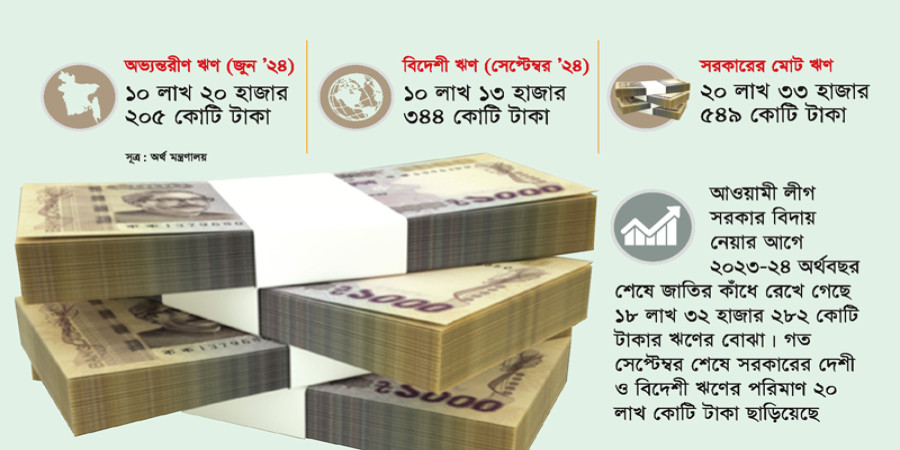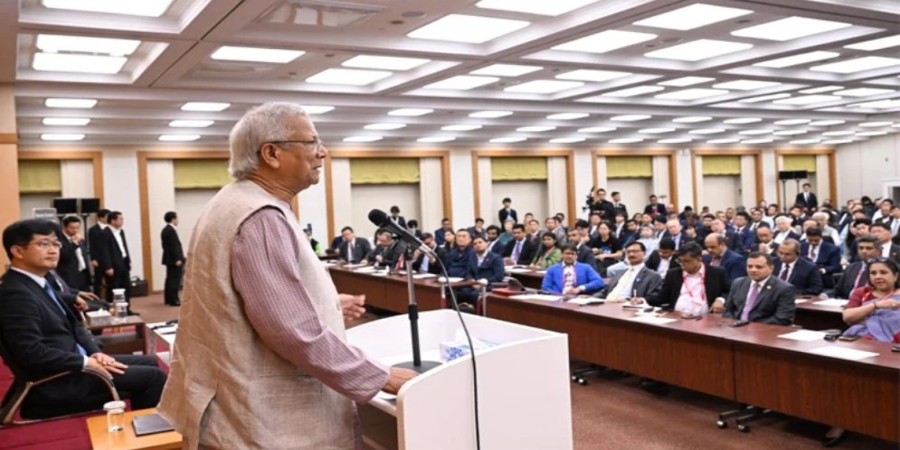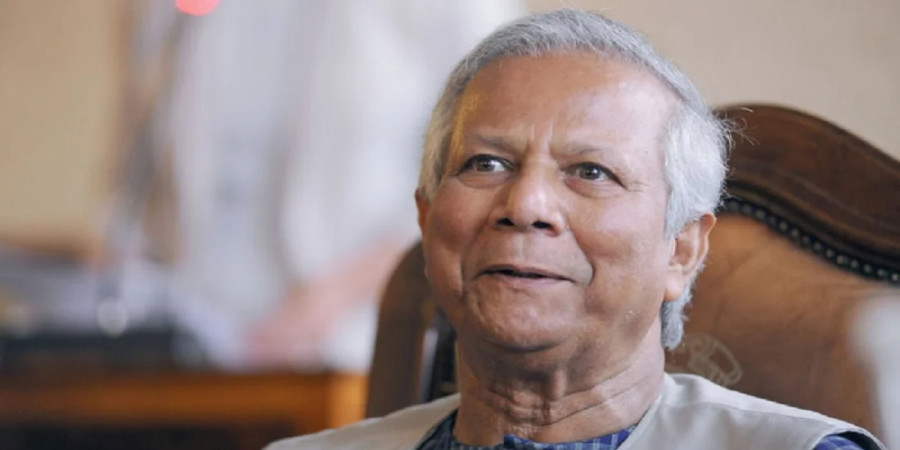
ছবি: Collected photo
As of September last year, the total national debt of Bangladesh has surpassed 20 lakh crore Taka, with foreign loans amounting to approximately 8,444 crore 54 lakh US dollars. This, when converted to local currency at the exchange rate of 120 Taka per dollar, equals around 10 lakh 13 thousand 344 crore Taka. The remaining portion of the debt is domestic, raising concerns among economists about the sustainability of the country's financial position.
The growing national debt, which now exceeds the country’s revenue collection and foreign income, has sparked warnings from economists about a potential future crisis. They stress the importance of effective debt management strategies to prevent the situation from worsening. Failure to ensure that borrowed funds are spent productively could significantly reduce the country’s ability to repay these loans in the future.
Compared to its Gross Domestic Product (GDP), Bangladesh's revenue collection remains one of the lowest globally. Despite the steady increase in government expenditure, revenue from exports and remittances has not met expectations. This mismatch has led the government to continue borrowing both domestically and from foreign sources to cover the budget deficit. In many cases, funds borrowed have been linked to corruption and money laundering, exacerbating the financial strain on the nation.
According to the Ministry of Finance, the previous government, led by Prime Minister Sheikh Hasina, left a national debt of 18 lakh 32 thousand 282 crore Taka at the end of the 2023-24 fiscal year. This comprised 10 lakh 20 thousand 205 crore Taka in domestic debt and 8 lakh 12 thousand 77 crore Taka in foreign loans.
Since the start of Sheikh Hasina’s administration, the size of the national budget has grown significantly, but government borrowing has expanded at an even faster rate. In the 2009-10 fiscal year, Bangladesh's total government debt was 2 lakh 76 thousand 830 crore Taka, of which 1 lakh 61 thousand 20 crore Taka was foreign debt and 1 lakh 15 thousand 810 crore Taka was domestic borrowing. This borrowing has been sourced from the banking sector, as well as savings bonds and other financial instruments.
Economists argue that while the national debt has been increasing steadily, the funds borrowed have not been utilized effectively, and in some cases, they have been diverted for corrupt practices. Furthermore, projects funded by loans have not always generated sufficient returns, leading to doubts about the country’s ability to repay these loans. If loans are not channeled into productive sectors, the ability to repay will diminish further, leading to long-term financial instability.
Dr. Mustafa K. Mujeri, former Chief Economist of Bangladesh Bank and Executive Director of the Institute for Inclusive Finance and Development (INMF), emphasized the need for effective management of the borrowed funds. He stated that while the local currency’s devaluation increases the burden of foreign debt, the crucial factor will be whether Bangladesh can use borrowed money in ways that enhance production and economic output. If the funds are not effectively spent, the country's ability to repay debts will decrease, resulting in higher financial pressure in the future.
The economy is further strained by large-scale infrastructure projects and mega-projects initiated under the Awami League government, which have continuously inflated the national budget. However, revenue collection has not kept pace, and various tax exemptions granted for vested interests have contributed to the loss of revenue. This reliance on debt, both domestic and foreign, to meet growing expenditure has also limited the government's flexibility in formulating economic policies. Foreign assistance in the form of loans has been contingent on accepting certain conditions, thereby restricting the country's ability to implement independent fiscal policies.
For the 2024-25 fiscal year, the Sheikh Hasina government had announced a budget of 7 lakh 97 thousand crore Taka, with a revenue target of 5 lakh 41 thousand crore Taka. The deficit was projected to be covered by borrowing from both domestic and international sources. The development expenditure target was set at 2 lakh 81 thousand 453 crore Taka, with 2 lakh 65 thousand crore Taka allocated for the Annual Development Program (ADP). The interim government, which assumed power following the mass uprising in August, has made only slight adjustments to the budget, though recent decisions to reduce the size of the budget are unlikely to bring significant relief. Additionally, rising interest rates have become a major concern, with debt servicing costs expected to exceed previous records.
According to data from the National Board of Revenue (NBR), revenue collection for the first four months of the fiscal year (July-October) amounted to 1 lakh 1 thousand 281 crore Taka, falling short of the target of 1 lakh 32 thousand 114 crore Taka. The monthly revenue collection averaged around 25 thousand 320 crore Taka, a 1% decrease compared to the same period in the previous fiscal year.
Despite the decrease in revenue collection, government expenditure continues to rise, further increasing the country's reliance on debt. A significant portion of government revenue is now being allocated to service existing debt and pay interest. Under ongoing loan programs, the International Monetary Fund (IMF) has set ambitious revenue targets for Bangladesh, with a goal of collecting over 4.5 lakh crore Taka in the current fiscal year. However, economists and business leaders are skeptical about the feasibility of achieving this target given the current economic challenges.
The government's borrowing and debt servicing pressures are expected to reach unprecedented levels in the 2024-25 fiscal year, with the Ministry of Finance forecasting a total repayment of around 3.5 lakh crore Taka in principal and interest payments. The budget has allocated 1 lakh 13 thousand 500 crore Taka for interest payments, though this figure is expected to rise by the end of the year, potentially reaching 1 lakh 23 thousand crore Taka. As a result, the total debt repayment could exceed 4.7 lakh crore Taka by the end of the fiscal year. This represents the highest debt repayment in Bangladesh’s history, with pressure on repayment expected to remain high through 2028-29.
Economists argue that the key issue is not just the quantity of debt but the ability to manage it effectively. Although Bangladesh’s debt is relatively low compared to its GDP, the country is facing an economic crisis due to insufficient revenue generation and foreign exchange inflows. As such, a comprehensive evaluation of the risks associated with borrowing, including the country’s revenue collection, export performance, and remittance inflows, is crucial for long-term financial stability.
Dr. Zahid Hossain, former Chief Economist of the World Bank’s Dhaka office, pointed out that foreign debt has increased from 99% of foreign income in the 2018-19 fiscal year to 146% in 2023-24, signaling a growing pressure on foreign exchange reserves. Similarly, internal debt as a percentage of revenue has increased from 212% in 2018-19 to 276% in 2023-24, further exacerbating the government’s fiscal challenges.
As Bangladesh continues to borrow to meet its growing fiscal needs, economists caution that the country must develop strategies to ensure that debt is used productively and that revenue generation is enhanced to manage the long-term debt burden effectively.
repoter






